Plastic Embeds Itself Along Ocean State’s Renowned Coastline
July 26, 2021
Dave McLaughlin has been organizing, leading and documenting Rhode Island shoreline cleanups for the past 15 years, and he’s noticed one item, which comes in all shapes, sizes and colors, becoming increasingly prevalent: plastic.
When the Middletown-based nonprofit he leads, Clean Ocean Access, began cleaning up Aquidneck Island’s coastline in 2006, staff and volunteers found bed frames, tires, refrigerators, glass bottles, aluminum cans and lots of fishing gear.
Today, a deluge of plastic now swamps the shoreline. McLaughlin said the petroleum-based tidal wave began about a decade ago. Besides the typical debris of plastic bags, straws, Capri Sun pouches, Styrofoam cups, candy wrappers and omnipresent cigarette butts — most filters are made of cellulose acetate, a plastic — this evolving pollution now features Jewel pods and the explosion of single-use plastics and multilayered packaging.
Multilayered packaging has several thin sheets of different materials, such as aluminum, paper and plastic, that are laminated together. It’s not made for recycling.
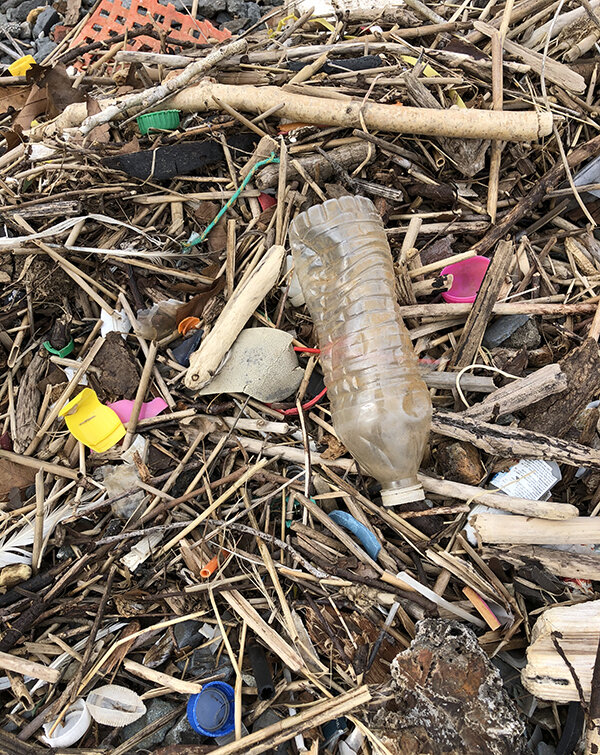
This growing amount of plastic packaging is washing up on shorelines worldwide, including along the Ocean State’s 420 miles of coast — arguably the state’s most important economic engine. In 2015, about 45 percent of plastic waste generated globally was from packaging materials, according to a 2018 white paper. A 2017 report found up to 56 percent of plastic packing manufactured in developing countries consists of multilayered materials.
It’s been estimated that every U.S. household uses nearly 60 pounds of multilayered packaging annually. Most isn’t or can’t be recycled, and much, like other plastic-related trash, ends up in the sea or washed up along the coast.
As of 2019, Clean Ocean Access had held 1,171 cleanups and removed nearly 69 tons of marine debris — about 118 pounds per cleanup — from Aquidneck Island’s shoreline and out of its coastal waters. Of the 14 most common items collected on land, half have been predominantly plastic: straws and stirrers; 6-pack holders; food wrappers; caps and lids; bottles; bags; and toys, according to the organization’s 2006-2019 Clean Report.
Of the 13 most common items pulled from the marine waters of Portsmouth, Middletown and Newport, five are plastic heavy: bleach and cleaning bottles; fishing line; sheets and tarps; strap bands; and buoys and floats.
All of these plastic items, on land and in the water, continue to break down into smaller and smaller toxic pieces that work their way up the food chain.
July Lewis, volunteer manager for Save The Bay, has been involved with shoreline cleanups since 2007. She said the one trend that is inescapable is the growing amount of microplastics and “tiny trash” — what she called pulverized pieces of bottle caps, cups and other plastics — that litter Rhode Island’s coastline.
“We are seeing more and more of it every year,” Lewis said. “It’s become part of the ecosystem.”
Peter Panagiotis, the well-known professional surfer better known as Peter Pan, has been surfing in Rhode Island waters, mostly along the coast of Narragansett, since 1963. He told ecoRI News that plastic now litters the coastline.
“There’s more plastic pollution, especially in the winter there is garbage everywhere,” the Pawtucket resident said. “Plastic pollution is the problem. There’s a lot more plastic garbage.”
Plastic debris makes up a growing amount of the material that is picked up annually during Save The Bay coastal cleanups. In 2019, 2,807 volunteers collected 7.8 tons of trash along 94 miles of shoreline — or about 5.5 pounds per person and 166 pounds per mile.
Of the material collected that year, plastic and foam pieces less than 2.5 centimeters long accounted for 27 percent of all the rubbish collected — 42,841 pieces of tiny trash. Microplastics, pieces less than 5 millimeters long (0.5 centimeters), are harder to see and pick up, but they are a growing presence.
The repulsive 2019 haul included plenty of other plastic: candy and chip wrappers (11,136); bags (6,213); straws and stirrers (4,629); lids (1,942); and utensils (1,050).
For nearly a decade, Geoff Dennis has been a one-man cleanup crew for the Little Compton shoreline. Dennis “got a taste for trash” while walking along Goosewing Beach in 2012.
“There’s more plastic pollution, especially in the winter there is garbage everywhere.”
Geoff Dennis
“It really bothers me. The first time I walked with the dog, I came back with over 100 Mylar balloons,” he told ecoRI News in 2017. “If I can start a conversation with people about it, that’s great. But most people just don’t care.”
Between 2012 and 2020, the longtime quahogger picked up 35,607 pieces of trash along the banks of the Sakonnet River and at Goosewing Beach Preserve and a few other places. The vast majority of it was some form of plastic, from bottles to wads for shotgun shells.
In fact, the amount of plastic he has collected just along Little Compton waters is shocking:
Balloons made from the resin polyethylene terephthalate, a clear, strong and lightweight plastic belonging to the polyester family and commonly referred to as Mylar, a registered trademark owned by Dupont Tejjin Films (2012-20): 8,510. That total doesn’t include the 1,194 latex balloons he collected in 2019 and ’20.
Plastic bottle caps (2017 and 2020): 4,107.
Plastic shotgun shells (2017 and 2020): 1,552.
Plastic wads for shotgun shells (2017 and 2020): 527.
Plastic straws (2016-19): 1,526.
Plastic snack bags (2015-2020): 867.
Plastic bags (2018-2020): 440.
Plastic and foam cups (2018-2020): 386.
Plastic coffee cup lids (2020): 94
K-Cup pods (2019 and 2020): 210.
Plastic nips (2020): 207.
Plastic lighters (2017 and 2020): 188.
Plastic bottles and aluminum cans (2012-2020): 15,324.
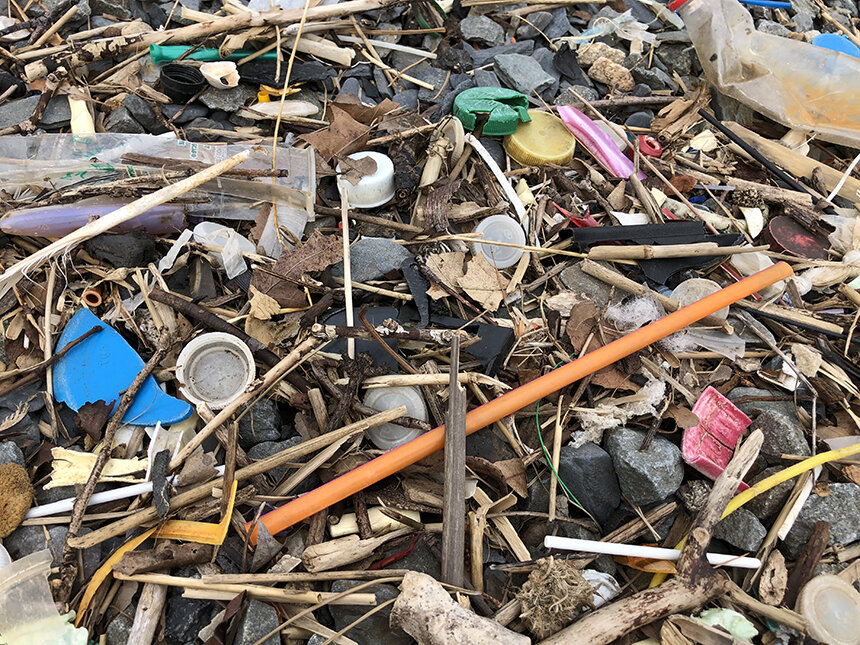
Lewis noted that in some places, such as Fields Point at the head of Narragansett Bay in Providence, plastic litter is indistinguishable from the natural world. She said most of this shoreline litter is generated from eating, drinking and smoking.
Save The Bay, too, is finding plenty of plastic flotsam and jetsam bobbing in Rhode Island’s coastal waters. The Providence-based organization is playing a leading role in establishing baseline data on the amount of microplastics within the Narragansett Bay watershed. The goal is to highlight this growing problem and draw attention to regional efforts to eliminate single-use plastics, such as cups, straws and bags.
The three staffers — Michael Jarbeau, Kate McPherson and David Prescott — largely responsible for conducting Save The Bay’s trawls for plastic have been surprised by how much they have found in local waters. When they started, they expected some microplastic trawls would come up empty. They’re still waiting for that to happen.
The crew has done more than 24 surface trawls, and every one has produced plastic bits, from nurdles, the raw building blocks for plastic bottles, bags and straws, to microfibers from polyester fleeces and other synthetic clothing to microbeads, which are used in exfoliating scrubs and in some toothpastes.
All of this overused plastic is changing the composition of Rhode Island’s marine waters. These petroleum byproducts don’t biodegrade. They remain in the environment for centuries. Their long-term impacts on environmental and public health aren’t close to being fully understood. Their impact on the natural world, however, has already been well documented.
Plastic bags float in Narragansett Bay, Block Island Sound and the Ocean State’s other marine waters like jellyfish. Turtles, whales and other sea animals often mistake them for food, causing many to starve or choke to death.
Adult seabirds inadvertently feed tiny trash to their chicks, often causing them to die when their stomachs become filled with fake food. As plastic breaks down into smaller fragments — microplastics may contain toxic chemicals as part of their original plastic material or adsorbed environmental contaminants such as PCBs — fish and shellfish become increasingly vulnerable to the toxins these polluted particles collect.
At least two-thirds of the world’s fish stocks are suffering from plastic ingestion, including local seafood favorites striped bass and quahogs.
On the positive side of the Ocean State’s shoreline trash problem, both McLaughlin and Lewis said they are seeing less dumping of big items, such as tires and appliances.

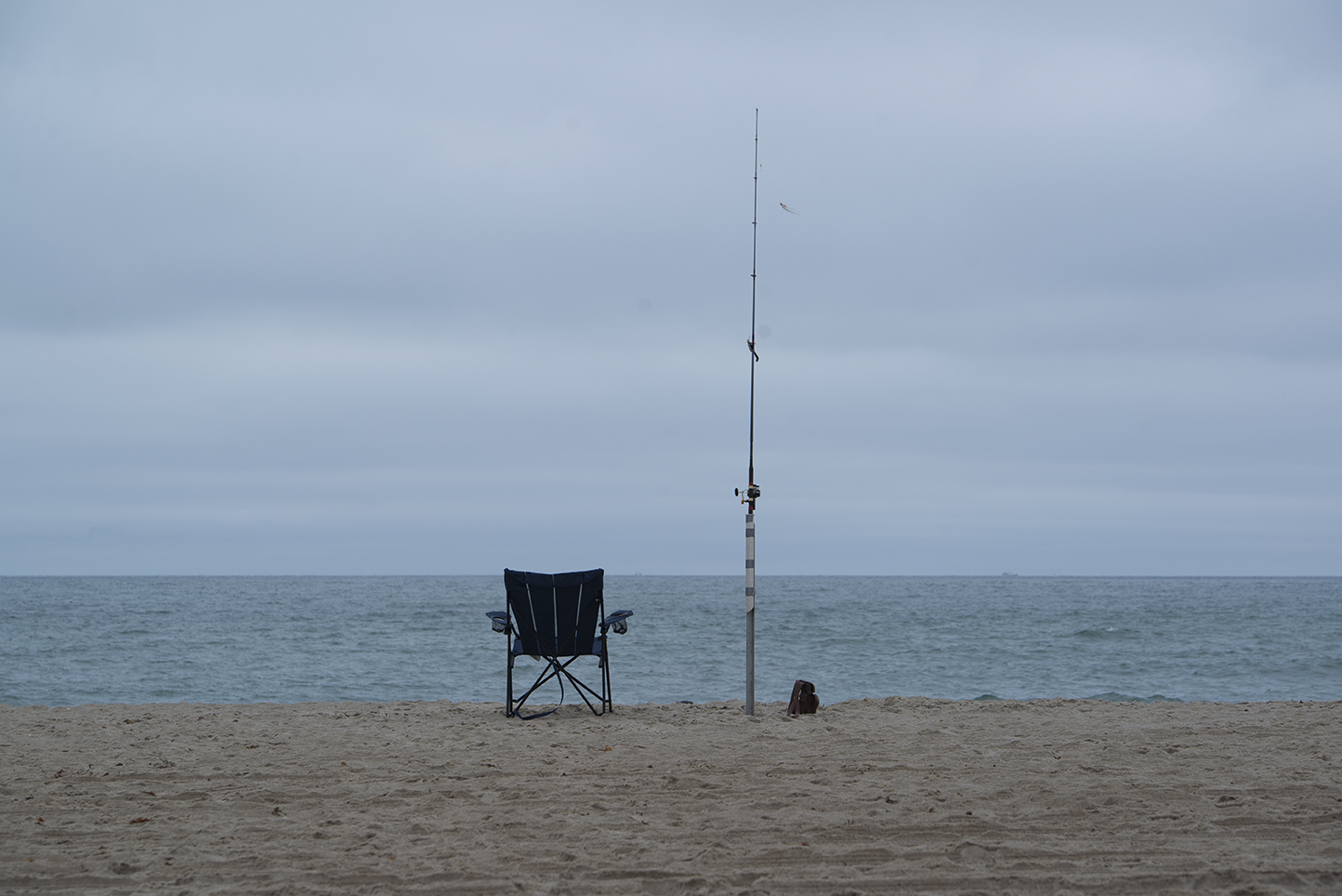
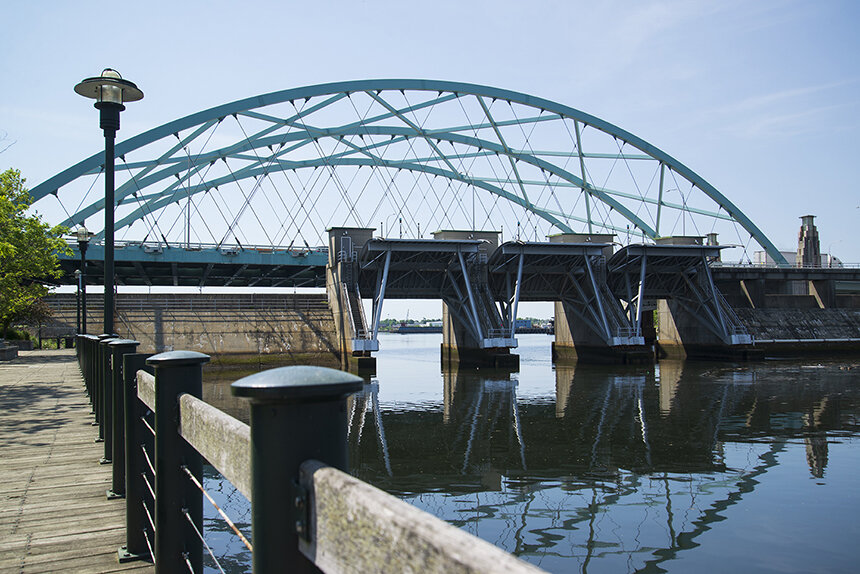
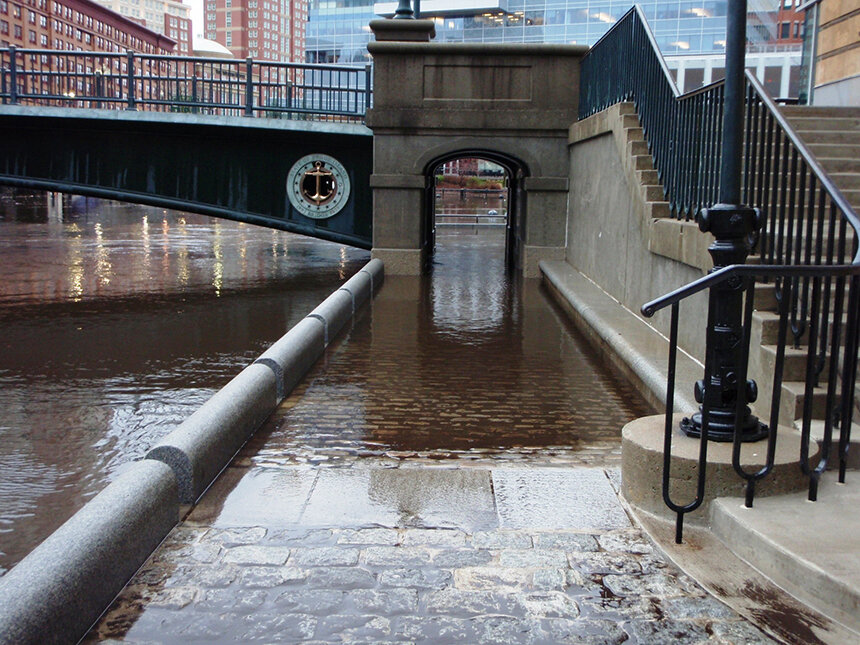
clean-ups by volunteers seem futile, a new batch will soon appear. Why aren’t officers of the companies that make these plastics required to clean it up or pay someone to do so?